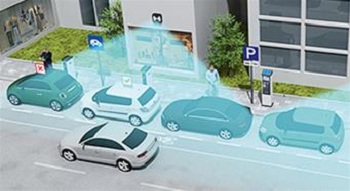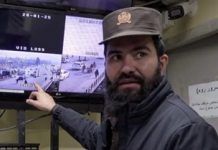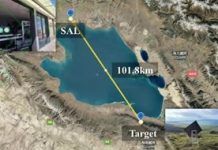Siemens and partners have launched the world’s first pilot project in Berlin aimed at simplifying the search for a parking space. The company has installed for test and demonstration purposes radar sensors on street lamps that provide information on parking space occupancy.
According to Siemens a recent study showed that every car driver wastes about 100 hours a year on average looking for a parking space and that this causes one third of traffic in city centres. That costs time, gas and nerves. The Siemens innovation is making targeted use of the opportunities offered by digitalisation: smart sensors, smart software and smart data interpretation. The benefits are clear: smart infrastructures save time, protect the environment and ultimately improve the quality of life for city dwellers. The envisaged result is an end to superfluous and hazardous traffic searching for a parking space, and optimum use of parking spaces within the city. Hence this first pilot project has now started in Berlin.
The network of sensors scans from above an area of up to 30 metres, the equivalent of five to eight parking spaces. As part of the City2.e 2.0 research project, Siemens is demonstrating a faster way to find kerbside parking in the Bundesallee in Berlin in cooperation with the Senate Department for Urban Development and the Environment in Berlin (SenStadtUm), the VMZ Berlin Betreibergesellschaft mbH, the Institute for Climate Protection, Energy and Mobility (IKEM), and the Robotics Innovation Center of the German Research Center for Artificial Intelligence (DFKI).
Therefore, street lamps on a 200-metre-long section of road between Walther-Schreiber-Platz and Friedrich-Wilhelm-Platz in Berlin Friedenau have been fitted with radar sensors that continuously monitor urban parking areas and report free parking spaces and the number of occupied e-parking spots to parking space management software. The data collected by the system can either be used by the traffic information center for its own information services or forwarded through a data interface, such as to app operators, so that drivers can always find free parking spaces simply by using their smartphone, a navigation device or the parking guidance signs.
The key aspect here is the software application developed by the Robotics Innovation Center uses intelligent learning methods. Data from parking space sensors helps the system to recognise typical parking space situations. This learning feature enables the system to predict in advance where and when the best chances exist for finding a free parking space. The system is also coupled with a multimodal route planner. So if no parking spaces are available, the route planner provides real-time information on possible options for switching to public transportation services. The project is funded by the German Federal Ministry for the Environment, Nature Conservation, Building and Nuclear Safety (BMUB). By doing so, the Federal Ministry is pursuing one essential goal: the reduction of the carbon dioxide, pollutant and noise emissions due to road traffic.








